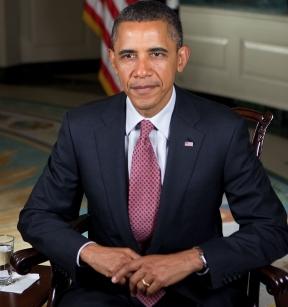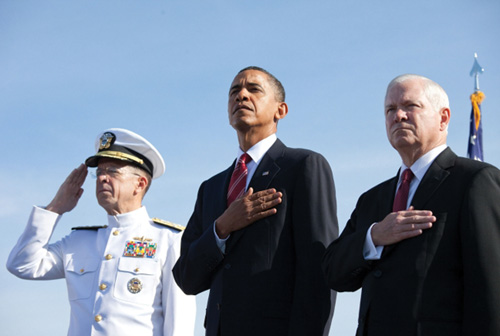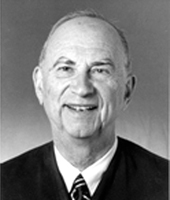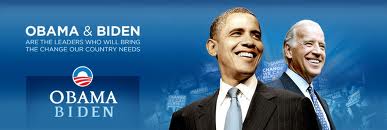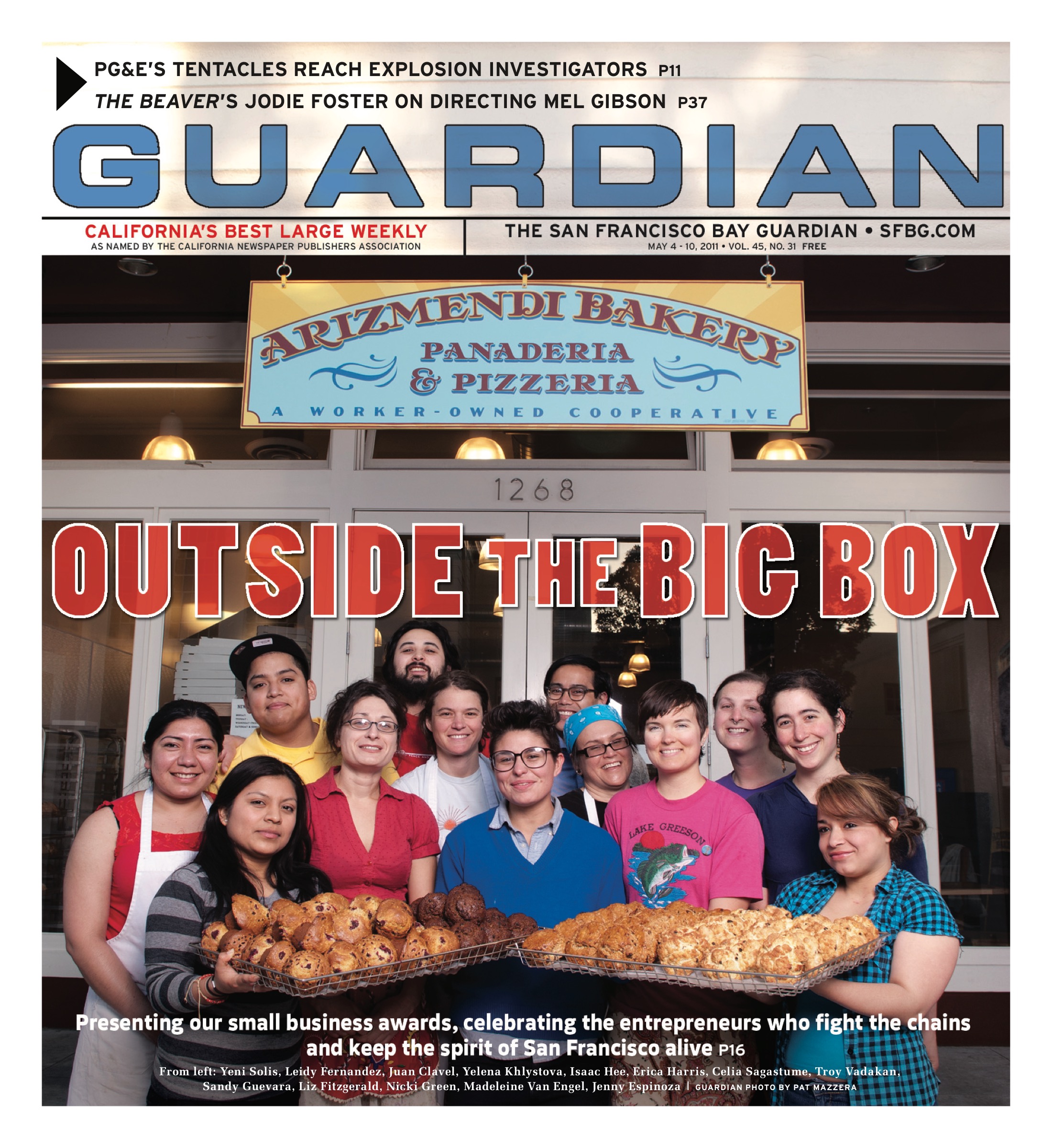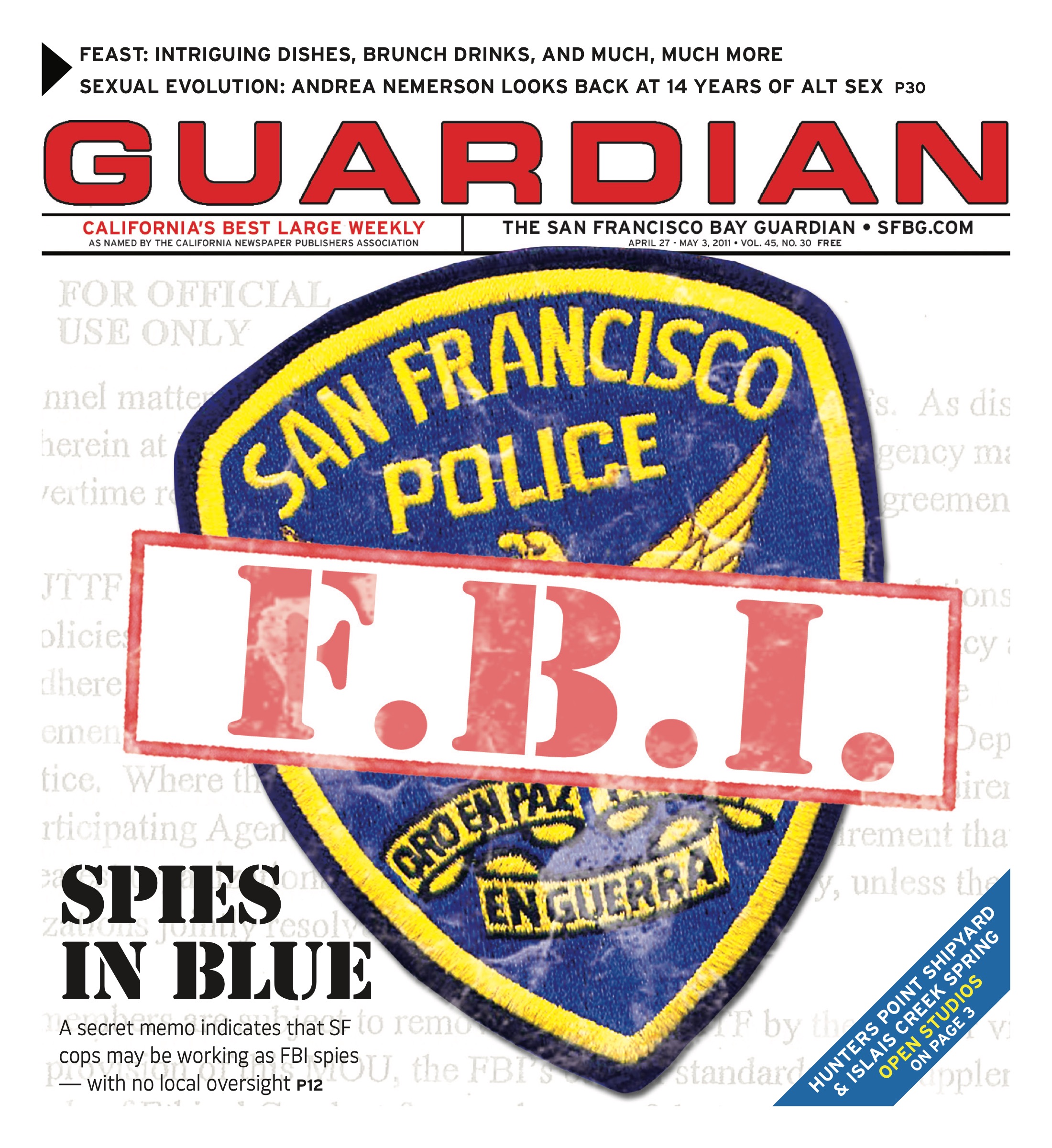Music listings are compiled by Cheryl Eddy. Since club life is unpredictable, it’s a good idea to call ahead to confirm bookings and hours. Prices are listed when provided to us. Submit items for the listings at listings@sfbg.com. For further information on how to submit items for the listings, see Picks.
WEDNESDAY 20
ROCK/BLUES/HIP-HOP
Bridge, Big Light, Real Nasty Slim’s. 8pm, $13.
Cypress Hill Warfield. 8pm, $45.
Dengue Fever, Maus Haus, DJ Felina Fillmore. 8pm, $22.50.
Fucking Buckaroos, Clepto, Mano Cherga Band El Rio. 9pm, $5.
Grand Lodge 50 Mason Social House, 50 Mason, SF; www.50masonsocialhouse.com. 9pm, free.
Gregory Alan Isakov, Fairchildren Café Du Nord. 8:30pm, $14.
Janet Jackson Bill Graham Civic Auditorium, 99 Grove, SF; www.tickemaster.com. 8pm, $49.50-149.50.
Limousines, K.Flay, Young Digerati, Shitty DJ Independent. 8pm, $15.
Angie Mattson, Beth Waters Hotel Utah. 8pm, $8.
Movits!, Planet Booty, Coppe with Deghouls Bottom of the Hill. 9pm, $12.
Radiators Great American Music Hall. 9pm, $30.
Thralls, Night Surgeon, Bad Bibles Hemlock Tavern. 9pm, $6.
FOLK/WORLD/COUNTRY
Artofficial, Hot Pocket, Seneca, DJ A-Train Elbo Room. 9pm, $8.
“Jah Summit Live” Blue Macaw, 2565 Mission, SF; www.jahsummit.eventbrite.com. 9pm, $7.
JAZZ/NEW MUSIC
Lynda Carter Rrazz Room. 8pm, $45-55.
Cosmo Alleycats Le Colonial, 20 Cosmo, SF; www.lecolonialsf.com. 7pm.
Dink Dink Dink, Gaucho, Michael Abraham Amnesia. 7pm, free.
Larry Jazz Band Showroom, 1000 Van Ness, SF; www.theshowroomsf.com. 7pm, $10.
Ben Marcato and the Mondo Combo Top of the Mark. 7:30pm, $10.
Michael Parsons Revolution Café, 3248 22nd St, SF; (415) 642-0474. 8:30pm, free.
DANCE CLUBS
Booty Call Q-Bar, 456 Castro, SF; www.bootycallwednesdays.com. 9pm. Juanita Moore hosts this dance party, featuring DJ Robot Hustle.
Cannonball Beauty Bar. 10pm, free. Rock, indie, and nu-disco with DJ White Mike.
Jam Fresh Wednesdays Vessel, 85 Campton, SF; (415) 433-8585. 9:30pm, free. With DJs Slick D, Chris Clouse, Rich Era, Don Lynch, and more spinning top40, mashups, hip hop, and remixes.
Mary-Go-Round Lookout, 3600 16th St, SF; (415) 431-0306. 10pm, $5. A weekly drag show with hosts Cookie Dough, Pollo Del Mar, and Suppositori Spelling.
No Room For Squares Som., 2925 16th St, SF; (415) 558-8521. 6-10pm, free. DJ Afrodite Shake spins jazz for happy hour.
Respect Wednesdays End Up. 10pm, $5. Rotating DJs Daddy Rolo, Young Fyah, Irie Dole, I-Vier, Sake One, Serg, and more spinning reggae, dancehall, roots, lovers rock, and mash ups.
Synchronize Il Pirata, 2007 16th St, SF; (415) 626-2626. 10pm, free. Psychedelic dance music with DJs Helios, Gatto Matto, Psy Lotus, Intergalactoid, and guests.
Third Wednesdays Underground SF. 10pm-2am, $3. With Ms. Jackson, DJ Loryn, and Becky Knox spinning electro, tech, house, and breaks.
THURSDAY 21
ROCK/BLUES/HIP-HOP
Nicholas Burke, Infantree, Hugo, Damato Hotel Utah. 8pm, $8.
Crackerjack Highway 50 Mason Social House, 50 Mason, SF; www.50masonsocialhouse.com. 9pm, free.
Harderships, Mammatus Knockout. 9:30pm.
Marchfourth Marching Band Independent. 8pm, $18.
Mimosa, Paper Diamond Dillmore. 8pm, $22.50.
Off!, Culture Kids, Ecoli Eagle Tavern. 9pm.
Valerie Orth, Stringer Belle, Audiafauna Café Du Nord. 9pm, $10.
Ty Segall, Royal Baths, TRMRS, Nick Waterhouse and the Tarots Bottom of the Hill. 8:30pm, $8.
Sparrows Gate, SentiMentals, Toshio Hirano Amnesia. 9pm, $7.
Subhumans, M.D.C., Vacuum Thee Parkside. 8:30pm, $12.
System and Station, Gold Medalists, Sprains Hemlock Tavern. 9pm, $7.
Young the Giant, Man in Space, Strange Birds Slim’s. 9pm, $14.
Zeds Dead Regency Ballroom. 8pm, $20.
JAZZ/NEW MUSIC
Lynda Carter Rrazz Room. 8pm, $45-55.
Collective Revolution Café, 3248 22nd St, SF; (415) 642-0474. 8:30pm, free.
Dime Store Dandy Rite Spot, 2099 Folsom, SF; www.ritespotcafe.net. 9pm, free.
Organsm featuring Jim Gunderson and “Tender” Tim Shea Bollyhood Café. 6:30-9pm, free.
Stompy Jones Top of the Mark. 7:30pm, $10.
FOLK/WORLD/COUNTRY
Country Casanovas Atlas Café. 8-10pm, free.
Jessica Fichot Red Poppy Art House. 7pm, $12-15.
“Twang! Honky Tonk” Fiddler’s Green, 1330 Columbus, SF; www.twanghonkytonk.com. 5pm.
DANCE CLUBS
Afrolicious Elbo Room. 9:30pm, $5. DJs Pleasuremaker and Señor Oz spin Afrobeat, tropicália, electro, samba, and funk.
Base Vessel. 10pm, $10. With Three and Greg Eversoul.
Caribbean Connection Little Baobab, 3388 19th St, SF; (415) 643-3558. 10pm, $3. DJ Stevie B and guests spin reggae, soca, zouk, reggaetón, and more.
Club Jammies Edinburgh Castle. 10pm, free. DJs EBERrad and White Mice spinning reggae, punk, dub, and post punk.
Culture Corner Koko Cocktails, 1060 Geary, SF; www.kokococktails.com. 10pm, free. Roots reggae, dub, rocksteady, and classic dancehall with DJ Tomas, Yusuke, Vinnie Esparza, and Basshaka and ILWF.
Drop the Pressure Underground SF. 6-10pm, free. Electro, house, and datafunk highlight this weekly happy hour.
80s Night Cat Club. 9pm, $6 (free before 9:30pm). Two dance floors bumpin’ with the best of 80s mainstream and underground with Dangerous Dan, Skip, Low Life, and guests. This week, celebrate Robert Smith’s birthday with a Cure-themed night.
Guilty Pleasures Gestalt, 3159 16th St, SF; (415) 560-0137. 9:30pm, free. DJ TophZilla, Rob Metal, DJ Stef, and Disco-D spin punk, metal, electro-funk, and 80s.
Jivin’ Dirty Disco Butter, 354 11th St., SF; (415) 863-5964. 8pm, free. With DJs spinning disco, funk, and classics.
Mestiza Bollywood Café, 3376 19th St, SF; (415) 970-0362. 10pm, free. Showcasing progressive Latin and global beats with DJ Juan Data.
Monsoon Season El Rio. 9pm, free. World beats with DJ ExEss.
Nightvision Harlot, 46 Minna, SF; (415) 777-1077. 9:30pm, $10. DJs Danny Daze, Franky Boissy, and more spinning house, electro, hip hop, funk, and more.
1984 Mighty. 9pm, $2. The long-running New Wave and 80s party has a new venue, featuring video DJs Mark Andrus, Don Lynch, and celebrity guests.
Peaches Skylark, 10pm, free. With an all female DJ line up featuring Deeandroid, Lady Fingaz, That Girl, and Umami spinning hip hop.
Thursday Special Tralala Revolution Café, 3248 22nd St, SF; (415) 642-0474. 5pm, free. Downtempo, hip-hop, and freestyle beats by Dr. Musco and Unbroken Circle MCs.
FRIDAY 22
ROCK/BLUES/HIP-HOP
Amon Amarth Regency Ballroom. 9pm, $25.
Lynda Carter Rrazz Room. 8pm, $45-55.
Diego’s Umbrella, Vagabond Opera, Mark Growden Independent. 9pm, $15.
Disastroid, Here, Fondue El Rio. 9pm, $8.
Endoxi, Bob Hill Band Union Room (above Biscuits and Blues). 8:30pm, $10.
Glen Fajardo and Eddie Cohn 50 Mason Social House, 50 Mason, SF; www.50masonsocialhouse.com. 9pm, free.
Lost in the Trees, Sean Rowe Hemlock Tavern. 9:30pm, $10.
Mustache Harbor Café Du Nord. 9:30pm, $15.
Randy Newman Davies Symphony Hall, 201 Van Ness, SF; www.sfjazz.org. 8pm, $25-45.
Radio Moscow, Hot Lunch Thee Parkside. 9pm, $10.
“Sugar Rush: A Fundraiser Concert for the American Diabetes Association” Rasselas Jazz. 9pm, $10-20. With Jay Trainer Band, Ziva, Peggle Theory, For the Broken, and more.
Kurt Vile and the Violators, RTX, Carletta Sue Kay Bottom of the Hill. 10pm, $14.
“Yard Concert Fundraiser 2011” Dolores Park Café, 501 Dolores, SF; www.doloresparkcafe.com. 7pm, $20. With Audrey Howard, Laura Zucker, True Margit, Shelley Doty, Groovy Judy, and Sistas in the Pit.
JAZZ/NEW MUSIC
Black Market Jazz Orchestra Top of the Mark. 9pm, $10.
Les Carnegie and the Jazz Vanguards Condor, 300 Columbus, SF; www.condorsf.com. 3pm.
Ensemble Mik Nawooj Red Poppy Art House. 8pm, $10-15.
Wobbly, Ensemble Economonique, Thomas Carnacki Lab, 2948 16th St, SF; www.thelab.org. 8pm.
FOLK/WORLD/COUNTRY
Baxtalo Drom Amnesia. 9pm, $7-10.
Harvey Diller Revolution Café, 3248 22nd St, SF; (415) 642-0474. 9pm, free.
Lagos Roots AfroBeat Ensemble, DJ Jeremiah Elbo Room. 10pm, $13.
Yonder Mountain String Band Fillmore. 9pm, $25.
DANCE CLUBS
Afro Bao Little Baobab, 3388 19th St, SF; (415) 643-3558. 10pm, $5. Afro and world music with rotating DJs including Stepwise, Steve, Claude, Santero, and Elembe.
DJ Mei Lwun Medjool, 2522 Mission, SF; www.medjoolsf.com. 10:30pm, free.
Duniya Dancehall Blue Macaw, 2565 Mission, SF; (415) 920-0577. 10pm, $10. With live performances by Duniya Drum and Dance Co. and DJs dub Snakr and Juan Data spinning bhangra, bollywood, dancehall, African, and more.
Exhale, Fridays Project One Gallery, 251 Rhode Island, SF; (415) 465-2129. 5pm, $5. Happy hour with art, fine food, and music with Vin Sol, King Most, DJ Centipede, and Shane King.
Fubar Fridays Butter, 354 11th St., SF; (415) 863-5964. 6pm, $5. With DJs spinning retro mashup remixes.
Good Life Fridays Apartment 24, 440 Broadway, SF; (415) 989-3434. 10pm, $10. With DJ Brian spinning hip hop, mashups, and top 40.
Hot Chocolate Milk. 9pm, $5. With DJs Big Fat Frog, Chardmo, DuseRock, and more spinning old and new school funk.
Hubba Hubba Revue: The San Francisco Show DNA Lounge. 9pm, $10-15. Barbary Coast-themed burlesque.
PANTyRAID, LowRIZERz 103 Harriet, 1015 Folsom, SF; www.1015.com. 10pm, $25.
Psychedelic Radio Club Six. 9pm, $7. With DJs Kial, Tom No Thing, Megalodon, and Zapruderpedro spinning dubstep, reggae, and electro.
Rockabilly Fridays Jay N Bee Club, 2736 20th St, SF; (415) 824-4190. 9pm, free. With DJs Rockin’ Raul, Oakie Oran, Sergio Iglesias, and Tanoa “Samoa Boy” spinning 50s and 60s Doo Wop, Rockabilly, Bop, Jive, and more.
Some Thing Stud. 10pm, $7. VivvyAnne Forevermore, Glamamore, and DJ Down-E give you fierce drag shows and afterhours dancing.
Soul Rebel Koko Cocktails, 1060 Geary, SF; www.kokococktails.com. 10pm, free. Reggae, punk, 2tone, oi, and more with Dougie, Tim, and Tomas.
Vintage Orson, 508 Fourth St, SF; (415) 777-1508. 5:30-11pm, free. DJ TophOne and guest spin jazzy beats for cocktalians.
SATURDAY 23
ROCK/BLUES/HIP-HOP
Jello Biafra and the Guantanamo School of Medicine, Restarts, Dreadful Children, Bum City Saints Thee Parkside. 2:30pm, $10-12.
Eddie Cohn, Joyce Todd McBride and friends, Mindi Hadan, Con Brio Amnesia. 8pm, $7-10.
Foreverland, Sex With No Hands Bimbo’s 365 Club. 9pm, $22.
Daryl Hance Brick and Mortar Music Hall, 1710 Mission, SF; www.brickandmortarmusic.com.
“Lyrics Born presents Continuum” Yoshi’s San Francisco. 10:30pm, $26. With full live band and special guests.
Silly Pink Bunnies! Thee Parkside. 7pm, free.
Spectrum, Spyrals Hemlock Tavern. 9:30pm, $15.
Two Gallants Bottom of the Hill. 10pm, $15.
“UK Reunion Tour” Regency Ballroom. 8pm, $65-99. Featuring Eddie Jobson and John Wetton.
Yoni Wolf, Moore Brothers, Becky Wolf and Amy Miller Swedish American Hall (upstairs from Café Du Nord). 8pm, $15.
JAZZ/NEW MUSIC
Erin Brazill 50 Mason Social House, 50 Mason, SF; www.50masonsocialhouse.com. 9pm, free.
Garage a Trois, Amendola vs. Blades Independent. 9pm, $20.
Buddy Guy, John Németh Davies Symphony Hall, 201 Van Ness, SF; www.sfjazz.org. 8pm, $20-65.
Nucleus Revolution Café, 3248 22nd St, SF; (415) 642-0474. 9pm, free.
FOLK/WORLD/COUNTRY
Back49 Riptide Tavern. 9:45pm, free.
Lady A and the Heel Draggers, Misisipi Mike and the Midnight Gamblers, West Nile Ramblers, Bootcuts, DJ Blaze Orange Café Du Nord. 8:30pm, $13.
Quijeremá Red Poppy Art House. 8pm, $12-15.
“Sounds and Rhythms of Afghanistan” Herbst Theatre, 401 Van Ness, SF; (415) 621-6600. 8pm, $25-75.
Craig Ventresco and Meredith Axelrod Atlas Café. 4pm, free.
Yonder Mountain String Band Fillmore. 9pm, $25.
DANCE CLUBS
Afro Bao Little Baobab, 3388 19th St, SF; (415) 643-3558. 10pm, $5. Afro and world music with rotating DJs including Stepwise, Steve, Claude, Santero, and Elembe.
Barracuda 111 Minna. 9pm, $10. Eclectic 80s music with DJs Damon and Phillie Ocean plus 80s cult video projections, a laser light show, prom balloons, and 80s inspired fashion.
Bootie SF: DJ Tripp’s Birthday DNA Lounge. 9pm, $8-15. Mash-ups with DJ Tripp, David X, Mykill, and more.
Debaser Knockout. 9pm, $5. DJ Jamie Jams, EmDee, and Stab Master Arson spin 90s hip-hop jams.
DJ Clee Medjool, 2522 Mission, SF; www.medjoolsf.com. 10:30pm, free.
Fog and Laser Rickshaw Stop. 9pm, $7. DJs EmDee and RamblinWorker host this anything-goes, genre-free dance party.
4OneFunktion Elbo Room. 10pm, $5-10. Starship 27 Vol. 2 release party with guest performers Diabase, J-1, the 4OneFunktion All-Stars, and more.
Go Bang! Deco Lounge, 501 Larkin, SF; www.decosf.com. 9pm, $5. Atomic dancefloor disco action with Nicky B, Derrick Love, and more.
Mango El Rio. 3-8:30pm, $8-10. Sweet, sexy fun for women with DJs Edaj, Marcella, Olga, and La Coqui.
Reggae Gold Club Six. 9pm, $15. With DJs Daddy Rolo, Polo Mo’qz, Tesfa, Serg, and Fuze spinning dancehall and reggae.
Rock City Butter, 354 11th St., SF; (415) 863-5964. 6pm, $5 after 10pm. With DJs spinning party rock.
Spirit Fingers Sessions 330 Ritch. 9pm, free. With DJ Morse Code and live guest performances.
SUNDAY 24
ROCK/BLUES/HIP-HOP
“Aftermath: A Citizen to Citizen Tsunami Rescue and Relief Benefit” Thee Parkside. 8pm, $7-10. With Ass Baboons of Venus, Thunders, Tiger Honey Pot, and DJs Nako, Korri, and Lil Joe.
Alter Bridge, Black Stone Cherry, Like A Storm Regency Ballroom. 8pm, $28.
Eastern Conference Champs, Red Cortez, Apopka Darkroom Hemlock Tavern. 9pm, $8.
“It Gets Indie: A Benefit for It Gets Better and the Trevor Project” Great American Music Hall. 7:30pm, $25. With Rabbit! and Handshakes.
“JAMband Family Festival” Park Chalet, 1000 Great Hwy, SF; www.jamjamjam.com. 11am, free. With Charity Kahn.
Tower of Dudes, Graves Brothers Deluxe, Tunnel Make-Out Room. 8pm, $7.
Two Gallants Bottom of the Hill. 9pm, $15.
JAZZ/NEW MUSIC
Tom Lander Duo Medjool, 2522 Mission, SF; www.medjoolsf.com. 6-9pm, free.
FOLK/WORLD/COUNTRY
Family Folk Explosion Revolution Café, 3248 22nd St, SF; (415) 642-0474. 8:30pm, free.
Louis Romero and Mazacote El Rio. 5-8pm, $8.
Tater Famine Thee Parkside. 4pm, free.
DANCE CLUBS
Batcave Cat Club. 10pm, $5. Death rock, goth, and post-punk with Steeplerot Necromos and c_death.
Branded James Rickshaw Stop. 8pm, $5. Benefit for Back to Business career workshops.
Dub Mission Elbo Room. 9pm, $6. Dub, roots, and classic dancehall with DJ Sep, Ludachris, and guest Janaka Selekta.
Gloss Sundays Trigger, 2344 Market, SF; (415) 551-CLUB. 7pm. With DJ Hawthorne spinning house, funk, soul, retro, and disco.
Honey Soundsystem Paradise Lounge. 8pm-2am. “Dance floor for dancers – sound system for lovers.” Got that?
La Pachanga Blue Macaw, 2565 Mission, SF; www.thebluemacawsf.com. 6pm, $10. Salsa dance party with live Afro-Cuban salsa bands.
MONDAY 25
ROCK/BLUES/HIP-HOP
Travis Barker and Mix Master Mike Independent. 9pm, $30-50.
Mad Rad, Mash Hall, Toast Elbo Room. 9pm, $10.
Paul Simon Davies Symphony Hall, 201 Van Ness, SF; www.ticketmaster.com. 8pm, $65-125.
DANCE CLUBS
Death Guild DNA Lounge. 9:30pm, $3-5. Gothic, industrial, and synthpop with Joe Radio, Decay, and Melting Girl.
Krazy Mondays Beauty Bar. 10pm, free. With DJs Ant-1, $ir-Tipp, Ruby Red I, Lo, and Gelo spinning hip hop.
M.O.M. Madrone Art Bar. 6pm, free. With DJ Gordo Cabeza and guests playing all Motown every Monday.
Network Mondays Azul Lounge, One Tillman Pl, SF; www.inhousetalent.com. 9pm, $5. Hip-hop, R&B, and spoken word open mic, plus featured performers.
Sausage Party Rosamunde Sausage Grill, 2832 Mission, SF; (415) 970-9015. 6:30-9:30pm, free. DJ Dandy Dixon spins vintage rock, R&B, global beats, funk, and disco at this happy hour sausage-shack gig.
Skylarking Skylark. 10pm, free. With resident DJs I & I Vibration, Beatnok, and Mr. Lucky and weekly guest DJs.
TUESDAY 26
ROCK/BLUES/HIP-HOP
Civil War Rust, Cut Downs, Sheens Bottom of the Hill. 9pm, $8.
Jamaica, Chain Gang of 1974 Independent. 8pm, $15.
Outlaws and Preachers, Ghost Town Refugees John Colins, 138 Minna, SF; www.johncolins.com. 9pm, $5.
Ash Reiter, Radiation City, Phantom Kicks Hemlock Tavern. 9pm, $6.
Sugarspun, Silver Threads El Rio. 7pm, free.
tUnE-yArDs, Buke and Gass, Man/Miracle
Whiskey Avengers, Franco Nero, DJ Ras Fank Elbo Room. 9pm, $5.
FOLK/WORLD/COUNTRY
Quiet Echos Revolution Café, 3248 22nd St, SF; (415) 642-0474. 8:30pm, free.
DANCE CLUBS
Eclectic Company Skylark, 9pm, free. DJs Tones and Jaybee spin old school hip hop, bass, dub, glitch, and electro.
Share the Love Trigger, 2344 Market, SF; (415) 551-CLUB. 5pm, free. With DJ Pam Hubbuck spinning house.

